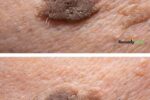Foreign Object Stuck in Your Ear? Here’s the Safe Way to Handle It That You May Not Know

It starts with a small discomfort — a strange pressure, a muffled sound, maybe even a tickling sensation. Before you know it, you realize something is stuck in your ear. Whether it’s a small insect, piece of cotton from a swab, bead, or even a seed (common in kids), foreign objects in the ear are more common than you’d think — and mishandling it can make things worse.
Here’s what to do (and NOT to do) when something finds its way inside your ear canal.
Why It Happens
Foreign objects in the ear are especially common among:
- Children, who often insert beads, buttons, or seeds while playing.
- Adults, during cleaning with cotton buds or when bugs crawl in while sleeping outdoors.
- People wearing hearing aids or earplugs, where parts can sometimes break off.
Symptoms to Watch For
- Ear pain or discomfort
- A feeling of fullness or blockage
- Muffled or reduced hearing
- Discharge or bleeding (if there’s damage)
- Ticking or movement (if it’s an insect)
- Dizziness or balance issues (if the object affects the inner ear)
What You Should NOT Do
1. Don’t use cotton swabs, tweezers, or sharp objects.
Trying to pull the object out yourself can push it deeper or injure the eardrum.
2. Don’t pour water in if you suspect the object is a seed, bean, or sponge-like material.
These items can swell and make the blockage worse.
Safe Ways to Handle It at Home (For Non-Emergency Cases)
1. For Insects:
- Tilt your head so the affected ear faces upward.
- Pour warm (not hot) mineral oil, baby oil, or olive oil slowly into the ear.
- Let it sit for 30 seconds to drown the insect.
- Then tilt the head in the opposite direction to let it drain out.
(Do NOT do this if there’s bleeding, drainage, or a ruptured eardrum.)
2. For Small, Loose Objects:
- Tilt your head and gently shake or tap the ear while pulling the earlobe downward.
- Sometimes gravity and position changes can dislodge it.
- You can also try flushing with warm saline if the object is not absorbent.
When to Seek Medical Help Immediately
- If the object is not visible or reachable
- If there’s bleeding, severe pain, or hearing loss
- If the object is firmly lodged or sharp
- If attempts to remove it make symptoms worse
- If it’s a child and you’re unsure how to proceed
Doctors can use special tools like suction devices, forceps, or tiny hooks to remove the object safely under proper lighting and magnification.
How to Prevent This in the Future
- Keep small items out of reach of young children.
- Avoid inserting anything into the ear canal — no matter how “gentle” it seems.
- Use earplugs or cotton only on the outer ear when needed.
- Wear insect-repellent or sleep with head coverings when camping or sleeping outdoors.
FAQs
Q: Is it safe to use ear candles or suction devices at home?
No. Ear candles can cause burns and suction kits are rarely effective — and may do more harm than good.
Q: What if the object has been there for days?
If the ear starts to smell bad or has pus-like discharge, it may be infected. See a doctor right away.
Q: Can an object cause permanent damage?
Yes, if it injures the eardrum or leads to infection, permanent hearing loss is possible. That’s why safe handling matters.
Final Thoughts
It might seem like a small thing, but a foreign object in the ear can quickly turn into a serious problem if not managed properly. The key is to stay calm, avoid poking around, and know when home care is safe vs. when a doctor is needed. When in doubt — always seek medical help. Your hearing and ear health depend on it.






